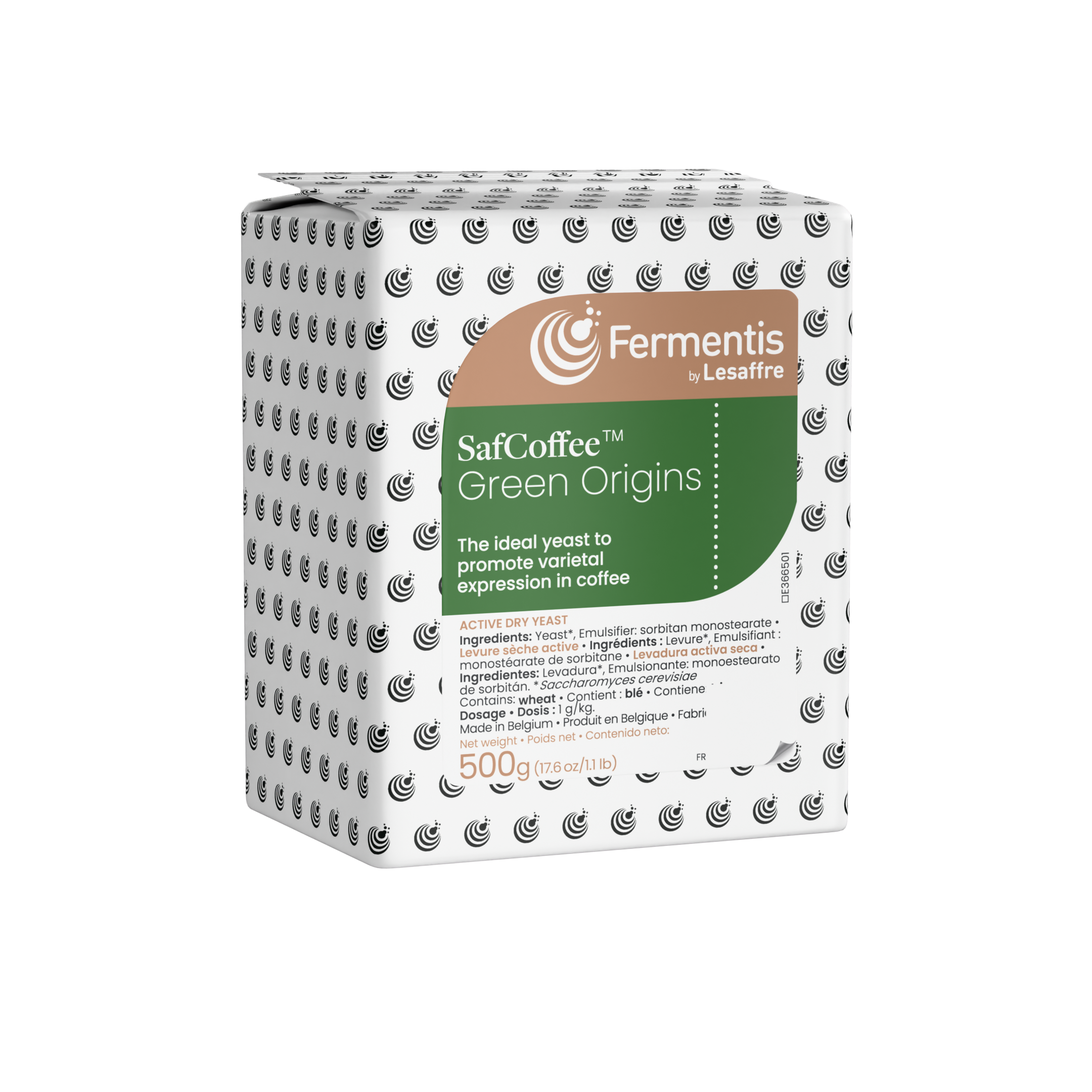The right choice for balanced cider
Ensures a very good assimilation of fructose and excellent for low gravity ciders.
Ingredients: Yeast (Saccharomyces cerevisiae), emulsifier : sorbitan monostearate (E491)
SafCider™ AB-1 overview
Killer
factor
Dry cider
suitability
Kinetics
Total
acidity
Total
esters
SafCider™ AB-1 sensory profile
Delicate aromatic profile combining fresh (apple) and elaborated fruit (applesauce) notes with a balanced mouthfel respecting cider structure.
Please note that those observations are based on French cider recipe trials.
SafCider™ AB-1 technical features
Dosage / Temperature
– 20 to 30 g/hl for first fermentation
– 30 to 40 g/hl for prise de mousse
– Broad fermentation temperature spectrum: 10-30°C (50-86°F).
Use
For sweet and dry ciders from fresh or concentrated apple juices.
Suitable for difficult fermentation conditions and mixes with sugar syrups.
Rehydration procedure:
① Direct inoculation:

Pour the yeast on the surface at least 10 times their weight of must (possibly directly on the top of the tank or during tank filling after clarification).
Gently stir to avoid or break clumps.
Immediately transfer into the tank via a pumping over with aeration (or homogenize tank volume).
② With prior rehydration:
Pour the yeast on the surface of 10 times their weight of tap water at room temperature.
Gently stir to avoid or break clumps.
Wait for 20 minutes and transfer into the tank via a pumping over with aeration.
- Excellent settlement strength even with its sensitive to killer phenotype
- Regular kinetic
- Broad fermentation temperature spectrum: 10-30°C (50-86°F)
- Very low nitrogen requirements: Ratio YAN**(mg/L)/Sugar(g/L) >0.7
- Very good assimilation of fructose
- Maximum initial SO2 level recommended: 125mg/L
- High malic acid consumption (up to 1.5g/L)
- Medium 2-phenylethanol and isoamyl acetate producer. Amylic notes can be enhanced especially when YAN/Sugar >1
- Viable yeast > 1.0 *1010 cfu/g
- Purity : > 99 %
-
-
- Lactic acid bacteria: < 1 cfu /107 yeast cell
- Acetic acid bacteria: < 1 cfu /107 yeast cell
- Pediococcus: < 1 cfu /107 yeast cell
- Total Bacteria: < 5 cfu /107 yeast cell
- “Wild” Yeast*: < 1 cfu /107 yeast cell
- Pathogenic micro-organisms: in accordance with regulation
-
*EBC Analytica 4.2.6 – ASBC Microbiological Control-5D
Storage
The high rate of dry matter of our yeasts assures an optimum storage in its original packaging at a temperature not higher than 20°C (68°F) (during 3 years) and 10°C (50°F) for an extended storage (4 years).
Shelf life
48 months from production date. Refer to best before end date printed on the sachet. Opened sachets must be sealed and stored at 4°C (39°F) and used within 7 days of opening. Do not use soft or damaged sachets.
Each Fermentis yeast is developed under a specific production scheme and benefits from the know-how of the Lesaffre group, world leader in yeast manufacturing. This guarantees the highest microbiological purity and maximum fermentation activity.
Note that you could find a different yeast classification for this product on our sachets and on older versions of our communication tools.
Indeed, this product was previously classified as Saccharomyces bayanus, but as the taxonomic classification of yeasts is a highly evolutive concept, the most recent edition of ‘The Yeast, a taxonomic study’ made us revise our classification to be aligned with the scientific community.
For sustainable reasons, we made the choice to use our remaining stock of printed sachets before we re-print new ones.
In the meantime, don’t worry if you have already fermented your beverage with this yeast strain, yeast taxonomy classification has no impact on the product characteristics.

















